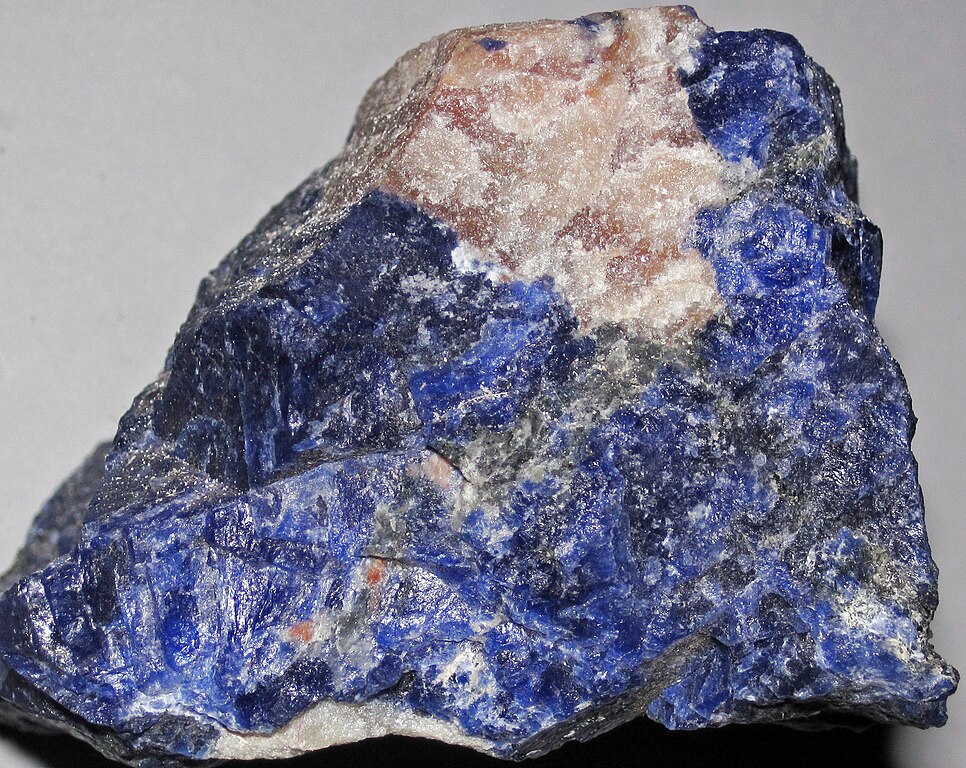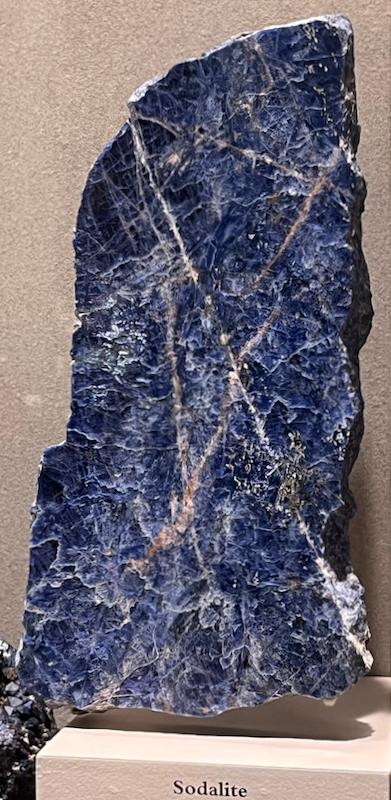Sodalite
In nature, most minerals you find are brown or white or black or gray, so when something is bright blue, it really stands out! “Royal blue” sodalite can form clear crystals, but they’re pretty rare. Usually you find it in large, opaque masses in rock. It gets its name from one of its main ingredients, the element sodium. You may know that salt (halite) also contains sodium, and in fact, both sodalite and salt contain a combination of sodium (Na) and chloride (Cl). But, fortunately for sodalite, it also contains silicon (Si), which makes it a silicate and means it won’t dissolve in water…, and people won’t put it on their french fries. As blue as it is, one of sodalite’s cool qualities is that it glows—or “fluoresces”—bright orange in UV light (ultraviolet light). Back in 2017, a Michigan man named Erik Rintamaki was using a UV light to find interesting rocks along Lake Superior, when he found some that glowed bright orange like hot embers. When he had them tested, it turned out it was sodalite that made them glow! If you’ve heard of “Yooperlites,” that’s the name he gave the sodalite rocks. Why? That part of Michigan is called the Upper Peninsula, and people who live there are nicknamed “Yoopers,” so he made up the rock name based on that nickname.
| Formula | Group or Type | Shape | Hardness | Specific Gravity | Streak | Luster |
|---|---|---|---|---|---|---|
| Na4(Si3Al3)O12Cl | — | Isometric | 5.5–6 | 2.2–2.4 | White | Vitreous to greasy |

